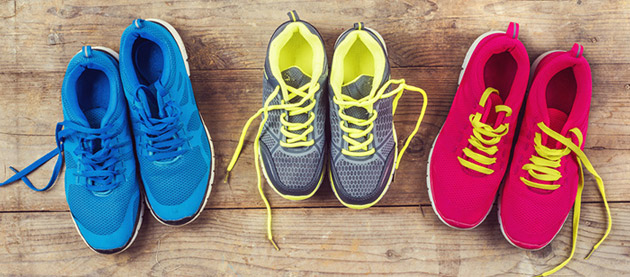Connect With Us
Blog
Items filtered by date: March 2016
TIPS TO REMEMBER WHEN PURCHASING ATHLETIC SHOES FOR BASEBALL AND SOFTBALL

Most common injuries to occur when participating in Baseball and Softball are sprains, tendinitis, stress fractures, and plater fasciitis. So when you are at the sporting goods store overwhelmed with the options and varieties of athletic shoes for your sport, remember the following tips to help narrow your search. Your conscious choice in footwear will enhance your performance, and propel your efforts to avoid injury. Remember the coolest looking shoe may not always be so cool if in the wrong way it affects the way you play. Things that say it’s the right shoe for you are as followed:
- To avoid heel pain for children ages 11-15 multi-cleats may be a very effective option for your athlete.
- Metal baseball spikes are not a suggested athletic shoe to be worn for preteen players.
- Orthoses, shoe inserts that are customized to prevent arch pain, provide support for catchers. Possible avenues to avoid arch pain that frequently plagues catchers.
Resources:
http://apma.files.cms-plus.com/ProductPDFs/Play%20It%20Safe%20Fact%20Sheet.pdf
http://www.apma.org/store/ProductDetail.cfm?ItemNumber=16333
TIPS TO REMEMBER WHEN PURCHASING ATHLETIC SHOES FOR SOCCER

Running, contact and kicking the ball, rapid change in directions, and sliding all speak soccer. Wet, dry, humid, hot, and cold conditions are always possible variables to the great game. Most common injuries to occur when participating in soccer is ankle sprains, Sever’s disease, ingrown toenails, and turf toe. In order to achieve optimum performance in any of these conditions footwear plays a major part, and you don’t want to be caught off guard. Knowledge is power. So when you are at the sporting goods store overwhelmed with the options and varieties of athletic shoes for your sport, remember the following three tips to help narrow your search. Your conscious choice in footwear will enhance your performance, and propel your efforts to avoid injury. Three things that say it’s the right shoe for you are as followed:
- Screw on variation cleats are not preferred over molded rubber cleats.
- In need of proper support for your arch and foot type, select footwear that provides a quality foot-bed.
- With variation of ground, choose a stud type that meets playing conditions most accurately. Turf, firm, hard, or soft.
Resources:
http://apma.files.cms-plus.com/ProductPDFs/Play%20It%20Safe%20Fact%20Sheet.pdf
http://www.apma.org/store/ProductDetail.cfm?ItemNumber=16333
TIPS TO REMEMBER WHEN PURCHASING ATHLETIC SHOES FOR RUNNING

Most common injuries that occur when participating in running are planter fasciitis, tendinitis, Morton’s neuroma, and stress fractures. So when you are at the sporting goods store overwhelmed with the options and varieties of athletic shoes for your sport, come into our office and check out the running shoes associated with us. Your podiatrist’s knowledge and experience will be able to get you up and running in no time. Things such as gate analysis etc. from your podiatrist will provide insight and great benefit to your running style and needs. This education from your doctor will have you equipped and undoubtedly fitted in the appropriate footwear. Your conscious choice in footwear will enhance your performance, and propel your efforts to avoid injury. After your visit to your podiatrist here are a few things to remember miles down the road:
Ideally shoes need to be replaced after 6-8 month or 600-800 miles of walking or running.
Have your feet measured and learn what foot arch type you have (high, medium, low) so you are able to know what to look for, and know what the appropriate shoe is for you.
Shoes that have high shock absorption tolerance help athletes stay clear of injury. Running shoes are designed for forward high-impact motion, and best if not used for lateral movement athletics.
Resources:
http://apma.files.cms-plus.com/ProductPDFs/Play%20It%20Safe%20Fact%20Sheet.pdf
http://www.apma.org/store/ProductDetail.cfm?ItemNumber=16333

